The Big Read: Without fanfare, a 40-strong team is laying the groundwork to save Singapore from sea level rise
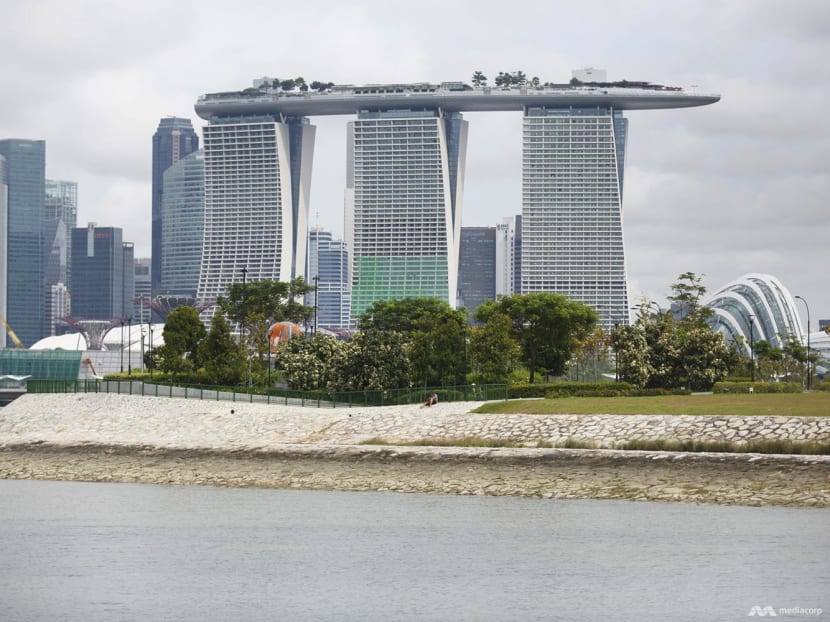
A view of Marina Bay Sands in Singapore. (Photo: TODAY/Aaron Low)
SINGAPORE: Many people sat up and took notice when Prime Minister Lee Hsien Loong spoke at the 2019 National Day Rally about spending S$100 billion over the next 50 to 100 years to protect Singapore from rising sea levels.
It was after all, a matter of "life and death", as Mr Lee put it.
Since then, the buzz has somewhat dwindled as more pressing issues occupied Singaporeans' minds. And there was also the not insignificant matter of a pandemic which seized Singapore and the rest of the world, and very much put everything else on hold.
Quietly in the background though, efforts to lay the groundwork to protect Singapore's coastal areas have continued unabated: For now, the gigantic task of preventing parts of the island from becoming partially submerged beneath the waves — possibly by the end of the century if nothing is done — falls onto a group of public servants comprising senior assistant director Sarah Hiong, 36, senior engineer Eugene Lim, 33, and their colleagues from national water agency PUB’s coastal protection department.
Not that any of them are fazed by the size of the undertaking — the urgency and significance of which, in fact, seem to be lost on some members of the public such as the team members' own friends and family.
“During Chinese New Year, or even at gatherings, when I tell them (friends and family) about my job, they will be like, ‘Oh, what is sea level rise and what do you do?’” said Mr Lim.
But instead of getting disheartened by the lack of awareness, Mr Lim said their curiosity often presents him with an opportunity to educate them on the need to get Singapore ready for rising sea levels caused by global warming and melting ice sheets.
Mr Lim has been with PUB for eight years. He previously held an operations-related role in another PUB department, and was assigned to the coastal protection department in 2020 when it was first formed.
The coastal protection department currently has more than 40 members.
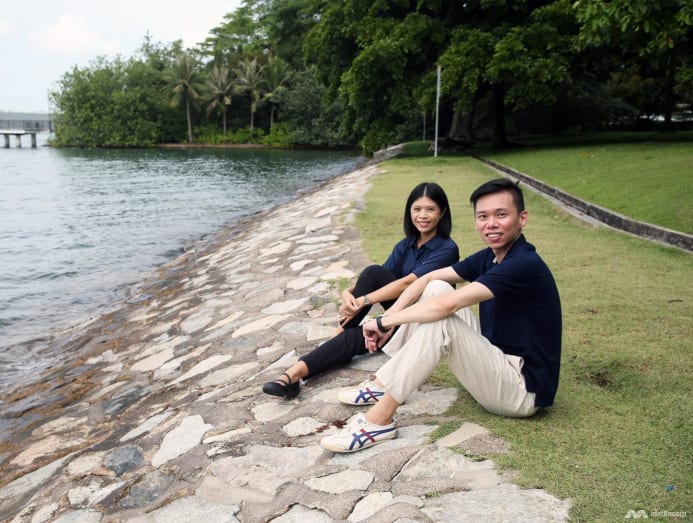
“Transiting from an operations role to a planning role was something very, very new to me … but I thought it would be very exciting to be part of a pioneer team of engineers embarking on a journey to protect Singapore from sea level rise.”
Today, his team manages Singapore’s first site-specific study for the City-East Coast coastline which covers 57.8km of coastline across areas including Changi, East Coast, Marina East, Marina South as well as part of the Greater Southern Waterfront. The study was announced a year ago and is slated to complete by 2025.
Part of the job, said Mr Lim, entails understanding the characteristics unique to the area, which will then allow PUB to design suitable coastal protection measures.
Although the department was formed during the height of the COVID-19 pandemic, Mr Lim said it has been making “steady progress in charting coastal protection strategies to combat rising sea levels”.
According to data from the National Climate Change Secretariat, about 30 per cent of Singapore is less than 5m above sea level.
The sea levels are projected to rise by 1m by 2100. However, they could go up to 4m or 5m above today's mean sea level if factors such as daily tidal activity, storm surges and land subsidence — the sinking of land caused by tectonic movement — are taken into account, said PUB on its website.
Referencing these facts, Minister for Sustainability and the Environment Grace Fu said in March that this is “high enough to potentially flood one-third of Singapore”.
PUB was appointed in April 2020 to lead and coordinate the Government’s efforts to protect Singapore’s coastlines.
In any case, Ms Fu described coastal protection in her speech in March as a “long-term endeavour”.
Among those in the coastal protection department helping with this endeavour is Ms Hiong and her masterplanning and regulatory team.
Ms Hiong, who has been with PUB for 13 years, said her division is responsible for reviewing Singapore’s long term-coastal protection strategies, policies and regulations that need to be put in place.
“As climate science and projections are continuously evolving, we have to think about the implications of different scenarios of sea level rise on Singapore. This complicates the planning of coastal protection strategies,” said Ms Hiong, adding that coastal protection against rising sea level is a relatively new field here.
Unlike Mr Lim, Ms Hiong was previously from a department dealing with climate change adaptation plans for water supply and drainage infrastructure and was already “plugged” into the Building and Construction Authority’s (BCA) Coastal Adaptation Study.
“As much as (the topic of) coastal protection is familiar to me, it is also exciting to be part of a brand new function for PUB.
“I think of it like a blank canvas. Today there is no coastal protection policy or master plan in place, so it is up to this team to … set the rules, so to speak,” she said.
Still, Ms Hiong was quick to stress that this does not mean that the coastal protection department is working in the dark.
Aside from using BCA’s study as a starting point, she said Singapore is also learning from other nations which have already begun their journey such as the United Kingdom and the world leader in coastal protection technologies, the Netherlands.
She added that PUB has also set up a coastal protection panel, comprising experts here and abroad, to strengthen its knowledge and expertise in coastal engineering.
“So that really mitigates the problem of us working in the dark,” she said.
Possible solutions being studied
Among the suggestions given by Prime Minister Lee Hsien Loong to tackle rising sea levels during his 2019 National Day Rally was one that involved reclaiming a series of islands offshore from Marina East to Changi, connecting them up with barrages and creating a reservoir, similar to Marina Reservoir.
Singapore has also already put in place some measures, including the use of polders, which are tracts of land that lie below sea level and are reclaimed through the building of dykes, drainage canals and pumping stations.
There is an ongoing polder project on Pulau Tekong, led by the Housing and Development Board, that is more than halfway complete and set to finish by the end of 2024.
Minister for National Development Desmond Lee said last month that the project, the first of its kind for Singapore, will help the nation to gain experience in developing polders, which “could be an option for coastal protection and resilience against sea-level rise”.
There are also plans to build infrastructure higher above the sea level. Professor Benjamin Horton, the director at the Earth Observatory of Singapore at the Nanyang Technological University, said that Changi Airport, for example, is building Terminal 5 at 5.5m above present sea level to protect against future rising sea levels.
“We can further think about engineering advances that will enable buildings to float,” he added.
PUB's coastal protection department is also looking at other possible solutions, with senior assistant director Sarah Hiong reiterating that it is “important to study all options, even long-term ones, comprehensively”.
Here are some other alternatives being studied by Singapore:
SEA WALLS AND ROCK REVETMENTS
Both are hard structures that protect against coastal erosion. At present, PUB says they line about 70 per cent of Singapore’s coastlines.
“Building sea walls around the entire Singapore is a simple and direct but not an entirely feasible solution, because we also have to consider the interactions between the land and sea,” said senior engineer Eugene Lim from PUB's coastal protection team.
For example, this could include natural coastal habitats, recreation and industries that require waterfront access.
“It will also not be aesthetically pleasing for the public too. Try imagining having a great wall built around the entire coastline of Singapore,” he added.
NATURE-BASED HYBRID SOLUTIONS
Mr Lim said PUB intends to explore hybrid solutions, which combine engineering solutions with nature-based elements, including the planting of mangroves, seagrasses or vegetation.
A benefit of this option, said Mr Lim, is that it provides an opportunity for Singapore to create habitats to enhance biodiversity.
However, it will not be possible to rely entirely on nature-based elements.
Taking mangroves as an example, Associate Professor Koh Tieh Yong, a weather and climate scientist from the School of Science and Technology at Singapore University of Social Sciences (SUSS), said that when sea level rises, the higher seawater will still infiltrate mangrove lands.
“During a storm, mangrove tree roots serve to break up the waves and hold down the earth, thus reducing coastal erosion. In this way, mangroves can protect areas further inland until the sea rises beyond a level where even mangroves cannot thrive.”
Thus, there will still be a need to pair it with man-made structures like sea walls as the main solution to sea level rise, he said.
Another downside is that most of Singapore’s coastal land is needed for residences, industries, maritime port, airport or recreational beaches and so cannot be replaced by mangroves.
MULTIFUNCTIONAL COASTAL DEFENCES
Due to Singapore’s land scarcity, multifunctional structures such as Marina Barrage, would be an ideal solution, said Mr Lim.
The barrage not only provides a source of water supply, it acts as flood control and even a venue for recreation — a “hot spot for families” to have picnics, fly kites and spend quality time together, he said.
One overseas example that protects against sea level rise which Ms Hiong highlighted is the Katwijk underground parking garage in the Netherlands, where much of the country is below sea level.
Designed by the Royal institute of Dutch Architects, it was the winner of the Best Dutch Building of the Year in 2016.
Situated beside a popular beach, the project is a car park that is not only able to house 650 cars, but also plays a critical role as a dyke to protect the small, eponymous town against future floods.
What is interesting about the project, said Ms Hiong, is that “you can't even tell that it's actually a coastal protection measure” because it is concealed within a sand dune so that it blends in with the beachfront.
“So this is an example that really inspired us… to build something that not only has such an important use for the nation, but also something that the public will actually come to enjoy,” she said.
THE PROGRESS SO FAR
One of the coastal protection department’s first tasks was to conduct studies on how to protect specific segments of the coastline along City-East Coast.
The site was identified due to the potential impact a flood event would have on critical assets such as the airport and economic and industrial districts within the area, as well as opportunities to dovetail with upcoming developments.
Mr Lim said part of the site studies involves examining the existing conditions of the coastline, as well as working with other government agencies to find out what their future land-use plans for the area are.
He added that the first tranche of the study, which began in May last year, was completed in December.
Aside from completing literature reviews of existing coastal protection measures used both locally and internationally, he said it highlighted the need to integrate the “multifunctionality within our coastal defences” for land-scarce Singapore, as well as the importance of stakeholder engagement.
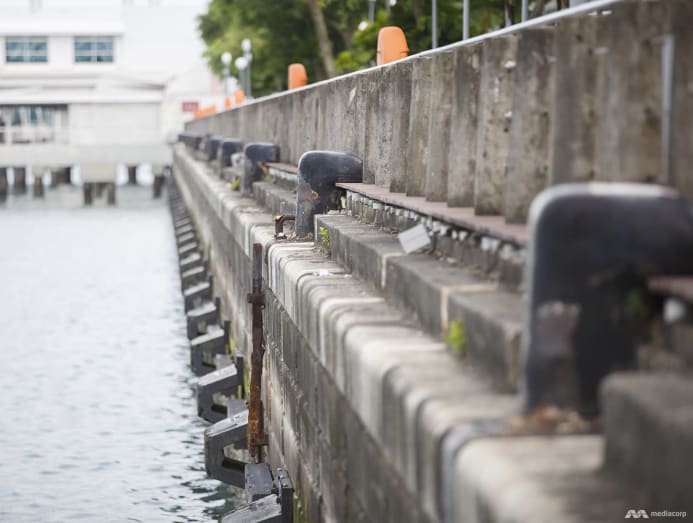
A vertical sea wall in the south of Singapore. According to data from the National Climate Change Secretariat, about 30 per cent of Singapore is less than 5m above sea level.
Another concept that the team learned from other countries and their expert panel is “adaptive planning”, said Ms Hiong.
“What this approach entails is that we first implement coastal protection measures, such as sea walls, such that they are sufficient to safeguard Singapore against near to mid-term sea level rise while keeping long-term protection options open,” she said.
Sea level rise is then monitored closely, with plans reviewed regularly.
“Should sea level rise faster than projected, we will activate the next round of construction to raise the coastal protection measures higher, ensuring that our coastal areas remain adequately protected,” said Ms Hiong.
Additionally, the first stage of the study had also identified “data gaps” in biodiversity information.
“A big part of our consideration when developing measures is of course, their potential impact to the environment. So, we have commissioned a study to find out more on this,” Mr Lim said.
PUB said there are different nature elements to consider, such as seagrass meadows and intertidal marine life in Changi, turtle nesting grounds at East Coast beach, mangroves at Berlayer Creek, as well as nature areas and coral reefs at Labrador Park.
Moving forward, Mr Lim said his team is in the process of identifying flood-risk areas and collecting site data to support the next stage of the study, which involves the planning and design of coastal protection measures along the City-East Coast coastline.
Similar studies for the North-West Coast coastline have recently started, and another for Jurong Island — led by site developer JTC Corporation — will commence this year. PUB said it hopes to complete formulating coastal protection plans for these three areas by 2030.
Once that is done, Mr Lim said implementation of the measures will start.
As for the other coastlines in Singapore, he said that the respective site-specific studies “will be rolled out progressively”.
PUB said earlier this year that the study for the North-West Coast coastline will be split into two separate studies.
The first study is a 24-km stretch from Tuas Checkpoint to Lim Chu Kang jetty that consists mainly dams and dykes that make up the Murai, Poyan, Sarimbun and Tengeh coastal reservoirs.
The second is a 15-km stretch that includes Sungei Kadut and Lim Chu Kang, which not only hold key assets such as Kranji Reservoir and the Woodlands Checkpoint, but are also home to nature areas as well as industries such as timber and waste management.
Beyond these site-specific studies, Ms Hiong said PUB had also embarked on the development of a Coastal-Inland Flood model in April last year, which will help assess the impact of climate change on Singapore’s coastal and low-lying areas.
“With the model, we can simulate the combined effects of both inland flood, which is caused by heavy rain, and coastal flood risks, caused by rising sea levels,” she said.
This means that in theory, it would be possible to see how extensive the damage caused by rising sea levels would be if there are no coastal protection measures in place.
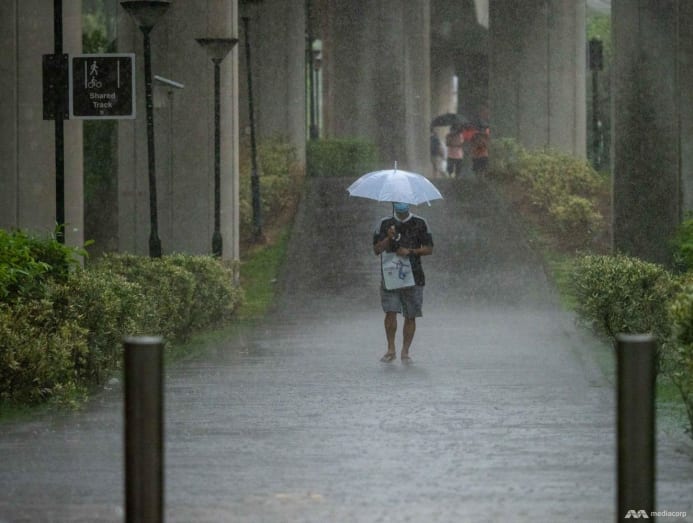
While no deadline for when the purpose-built model will be completed, Ms Hiong said it will be continually updated with the “latest climate data to help us evaluate the effectiveness of proposed coastal protection infrastructure”.
"A STEP AT A TIME"
Given that Singapore is one of the most densely populated and urbanised countries in the world, Mr Lim pointed out that "this means that we can expect damage to be more extensive, like disruption to lives, damage to infrastructure, if we are inundated”.
And due to Singapore’s “very limited land”, there is a need to be creative and find coastal protection solutions that optimise land use or serve multiple uses in order to balance coastal resilience with other land needs.
While it is useful to learn and adapt what other countries or cities have done, Mr Lim said there is a need to understand why these measures work, and “critically review if they will be equally effective when implemented in Singapore, as our conditions are different”.
Ms Hiong also said that the coastal protection department does not work in isolation, as a large part of the work involves engaging different stakeholders such as other government agencies, nature groups, businesses or even residents.
“We are also learning along the way…and taking one step at a time. So we can’t say, ‘Oh we’re two years old, so we already have a plan for the whole country’. We’re taking it slowly, studying each site carefully while learning the best practices (from other countries).”
Be that as it may, Ms Hiong said there are still segments of society who think that rising sea levels is a “future problem”, and with almost eight decades to go till the next century, it may be deemed too far down the road for them to be concerned with now.
But because planning for coastal protection and the construction of the physical coastal protection structures take time, it has to start now.
Ms Hiong added that “beyond developing Singapore's coastal protection strategies, there is also a need to educate and engage the public” to increase awareness and understanding of the topic and what is at stake.
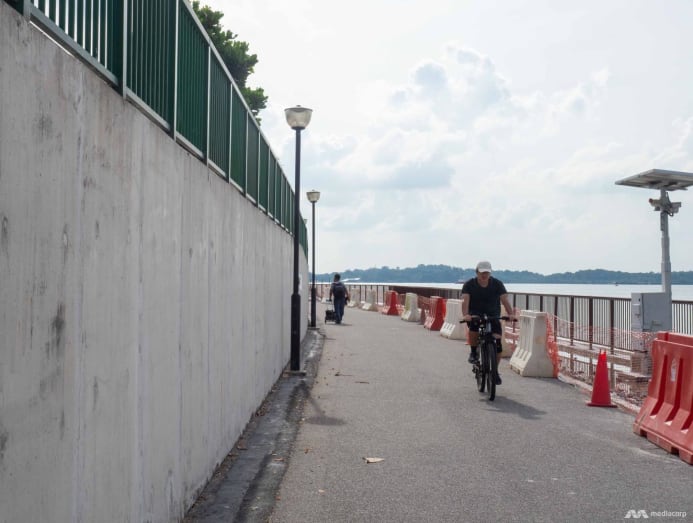
One way PUB has gone about this task is through a three-part edutainment series about coastal protection, “The Investigations of Sea-rius Li”, featuring local actor Alaric Tay. The series, in which Ms Hiong also makes an appearance, was launched on PUB’s website and social media channels in February.
RISING SEA LEVELS – A CLEAR AND PRESENT THREAT
As global warming continues its relentless march, rising sea levels are not a distant threat, scientists told TODAY.
As it is, global sea level has been rising in the 20th and 21st centuries at an “unmatched rate” for at least the last 3,000 years, said Professor Benjamin Horton, the director at the Earth Observatory of Singapore at the Nanyang Technological University.
Prof Horton, whose research concerns sea-level change, said since 1900, the sea level has risen by 20cm and the “waters are only rising faster”.
He said the average rate of sea level rise has increased from 1mm per year between 1901 and 1971, to 4mm per year between 2006 and 2018.
While this might seem like a miniscule amount, its impact has already been felt by some of Singapore’s neighbours, such as Indonesia where its capital Jakarta is sinking at a rate of 10cm a year due to a confluence of rising sea levels, land subsidence and rapid development.
The Indonesian government has since made a decision to shift its capital from the megacity, which has already sunk by at least 2.5m in 10 years according to a 2020 article by CNA, to Nusantara on the east coast of Borneo Island near Balikpapan.
Elsewhere in the central Pacific Ocean, the status of the low-lying atoll nation Marshall Islands as a country is similarly being threatened by rising waters.
A report by the World Bank last year said that projected sea level rise would mean 40 per cent of the buildings in the Marshall Islands’ capital of Majuro would be permanently flooded and entire islands would disappear.
Said Prof Horton: “We know that rising sea levels affect every coastal nation. But in the coming decades, the greatest effects will be felt in the Asia region, due to the number of people living in the continent’s low-lying coastal areas.”
He said eight Asian countries — China, Bangladesh, India, Vietnam, Indonesia, Thailand, the Philippines, and Japan — are likely to be most adversely affected.
“Together, these eight nations account for roughly 70 per cent of the 340 million people on land facing flooding from sea-level rise by the middle of the 21st century,” he said.
Associate Professor Koh Tieh Yong, a weather and climate scientist from the School of Science and Technology at Singapore University of Social Sciences (SUSS), also warned of other consequences of sea level rise which could have a knock-on effect on Singapore.
Regions such as the Mekong Delta in Vietnam could experience higher risk of coastal flooding during a storm, not only because they are low-lying but also because the societies there are more vulnerable.
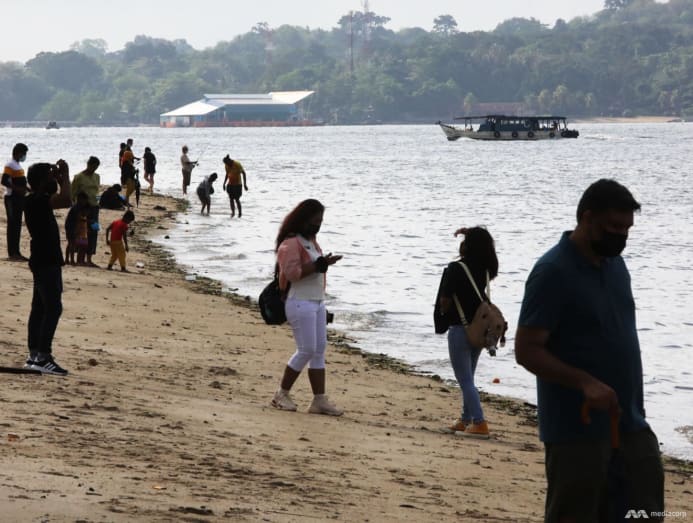
“When it is not flooding, the intrusion of seawater into underground aquifers causes the soil to become more saline in the Mekong Delta. This threatens rice production in Vietnam, which is the third-largest supplier of rice to Singapore in 2020,” said Assoc Prof Koh.
Prof Horton added: “Here’s a depressing fact: Sea-level rise through to 2050 is fixed.
“No matter how quickly nations lower emissions now, the world is looking at about 15 to 30cm of sea-level rise through the middle of the century, given the long-drawn impact of global warming on the oceans and ice sheets.”
Assoc Prof Koh said that even if the world achieves net carbon neutrality right now, many generations of humanity will still have to live with climate change. This is because enough greenhouse gases have been emitted into the atmosphere that global warming — and hence, sea level rise — will continue for the next few hundred years.
“The train has left the station, so to speak, even if it is an electric train,” he said.
As such, Prof Horton said that adaptation to sea-level rise should be a long-term obligation.
SINGAPORE’S WATER STORY V2.0?
Despite the somewhat bleak outlook, both Mr Lim and Ms Hiong see similarities between the coastal protection department’s current objective and Singapore’s other long-standing existential issue — ensuring an adequate water supply.
“Singapore is one of the most water-stressed countries in the world, but through a combination of grit and ingenuity, we have managed to develop a robust and diversified water supply with the four National Taps strategy,” said Mr Lim.
In essence, the strategy involves sourcing water from local catchment areas, importing it from Malaysia, reusing it and desalinating it from the sea.
“Today, Singapore is recognised as a model city for its successful water management,” said Mr Lim.
While rising sea levels are indeed a multi-faceted and complex challenge, he shared that the department is optimistic that PUB will, in the same way, turn this vulnerability into an opportunity.
Ms Hiong said she is hopeful that this will transform Singapore’s coastlines into “vibrant and beautiful spaces in time to come”.
“We are committed to using this opportunity to remake Singapore’s coastline, through integrating coastal protection plans with other agencies’ plans and through extensive stakeholders’ engagement to hear what they want to see in these coastal areas,” said Ms Hiong.
PUB said it intends to engage with the public, though details have yet to be announced.
“As a citizen, I am looking forward to enjoying these coastal areas myself in the future,” said Ms Hiong.
This story was originally published in TODAY.








